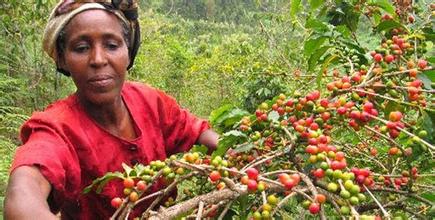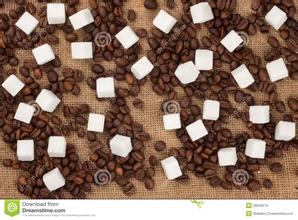Historical description of the story of coffee beans in Ethiopia
Historical description of the story of coffee beans in Ethiopia
Ethiopians drink coffee from small 3-ounce earless cups. After the coffee powder boils for the first time in a pottery pot, the hostess pours the coffee into the cup and adds a spoonful of sugar. The coffee made in this way is very thick, and the coffee grounds are not filtered. Although most of them remain at the bottom of the cup, there is still powder suspended in the coffee. People who are not used to it will inevitably choke their mouths. The coffee in the pottery pot can be boiled two or three times. If the guest is served with coffee, the guest will usually leave after the coffee is boiled for the second time. In addition, Ethiopians like to make coffee with a small pancake with sweet chili peppers. Ethiopians use a special clay pot to make coffee, which is heated by hot coal before making coffee. When the pottery pot is heated, the hostess first cleans the coffee beans to remove the parchment-like endocarp and silver skin from the surface of the beans. Then, the hostess will add a little rosin to the fire, incense the whole room, then take out an iron pan shaped like a pan, put it on the fire, pour in the washed coffee beans and stir-fry with a shovel. After a few minutes, the coffee beans gradually show a light brown cinnamon color, followed by a crackling sound-usually divided into "one explosion" and "two explosions". Not long after the explosion, the coffee beans turn dark brown. At this time, the coffee beans are poured into a stone mortar, mashed with a pestle and ground into a powder as fine as possible. Grind the coffee powder, pour it into a warm clay pot, add spices such as cardamom and cinnamon, or add a herb called Adam's Health to boil together.
Getachew Mengistie, director of Ethiopia's Bureau of intellectual property, bluntly pointed out that farmers sell raw beans for $1.45 a pound, while Starbucks sells for $26 a pound in the United States, 18 times the price difference between the two places. The reason is that Ethiopia does not know how to use intellectual property rights to create value for farmers. As long as it has the name of Ethiopian boutique beans, it can be marketed in the United States at three times the price of ordinary commercial beans. You know, investing in baking, packaging and marketing equipment through downstream channels in the United States alone cannot create such a huge added value, because most of the value comes from the coffee producing area (if Starbucks is not branded as "Sidamo", you can't sell it at such a high price. He stressed: "Ethiopia is the birthplace of coffee, and the famous producing areas of course have huge marketing value, but they are ignored by farmers. As a result, excess profits are finally earned by countries that know how to use the prestige of the place of origin to create value. It took no effort to earn it!

Important Notice :
前街咖啡 FrontStreet Coffee has moved to new addredd:
FrontStreet Coffee Address: 315,Donghua East Road,GuangZhou
Tel:020 38364473
- Prev

Description of Flavor characteristics and Origin of Brazilian Yellow bourbon Coffee Bean introduction of grinding scale by taste treatment
Brazil Yellow bourbon Coffee Bean Flavor description Origin description Taste treatment Grinding scale introduction Yellow bourbon itself is a variety of bourbon species, the pericarp is yellow, the top several places in Brazil COE competition over the years are yellow bourbon leader, the flavor is charming. Different from the monotonous flavor of ordinary Brazilian beans, this product has excellent acidity and lemon aromas in addition to the nutty aromas that Brazilian beans are used to.
- Next

Description of characteristics and Flavor of Tanzania Coffee beans introduction of manor varieties
Introduction to the characteristics and flavor of Tanzanian coffee beans Tanzania coffee has also been developed in the hands of German and British colonists and has long been loved by Europeans and squeezed into the ranks of famous products. The most favorable factors that make Tanzanian coffee famous are Hemingway and his novels. Ever since Hemingway embarked on his career as a writer in France, he and
Related
- Detailed explanation of Jadeite planting Land in Panamanian Jadeite Manor introduction to the grading system of Jadeite competitive bidding, Red bid, Green bid and Rose Summer
- Story of Coffee planting in Brenka region of Costa Rica Stonehenge Manor anaerobic heavy honey treatment of flavor mouth
- What's on the barrel of Blue Mountain Coffee beans?
- Can American coffee also pull flowers? How to use hot American style to pull out a good-looking pattern?
- Can you make a cold extract with coffee beans? What is the right proportion for cold-extracted coffee formula?
- Indonesian PWN Gold Mandrine Coffee Origin Features Flavor How to Chong? Mandolin coffee is American.
- A brief introduction to the flavor characteristics of Brazilian yellow bourbon coffee beans
- What is the effect of different water quality on the flavor of cold-extracted coffee? What kind of water is best for brewing coffee?
- Why do you think of Rose Summer whenever you mention Panamanian coffee?
- Introduction to the characteristics of authentic blue mountain coffee bean producing areas? What is the CIB Coffee Authority in Jamaica?

